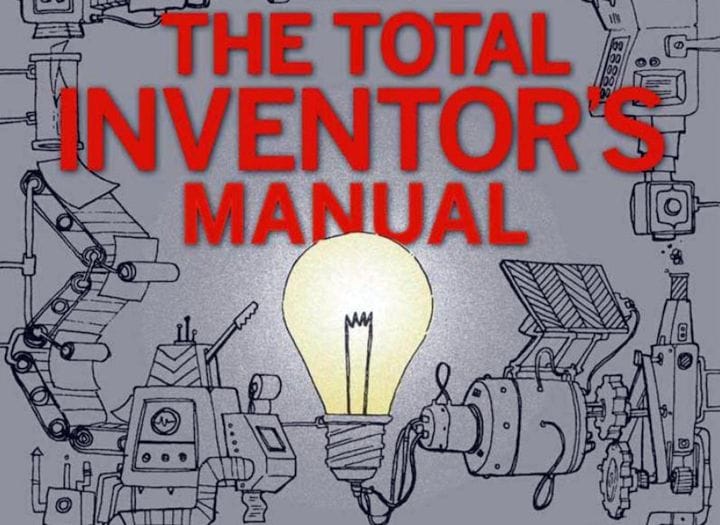![The Total Inventors Manual [Source: Amazon]](https://fabbaloo.com/wp-content/uploads/2020/05/image-asset_img_5eb0a2e0eb5ac.jpg)
This week’s selection is “The Total Inventors Manual” by Sean Michael Ragan.
Invention and 3D printing go hand in hand, mostly because the technology of 3D printing is so incredibly handy for producing prototypes. And prototypes are what drive innovation.
Conceive of something, print it, test it. Reconsider the design, print it, test it again. That’s the sequence always found when developing physical products, and because 3D printing requires no manufacturing tool up, it’s the natural tool to be used.
But how, exactly, does one go about inventing a useful product? What are the steps involved? What comes first, then second? These are the answers that are found in “The Total Inventors Manual”.
Having worked with many startups, I found the steps listed in this book to be quite appropriate and suitable for today’s inventor market.
The book begins with the initial stages of invention, where a rough idea is crystallized through research, discussion, networking and some simple non-making iterations. Most people don’t understand that the product you see is the survivor of perhaps hundreds of variations and ideas that were thrown out along the path to completion.
Then the book goes deep into the world of prototyping. It assumes you know nothing about prototyping, and perhaps have never even made anything by yourself, and thus takes time to explain the prototyping “cycle”. The book also travels the path with invention with two notable inventors, including Limor Fried of Adafruit.
An entire section on product testing is described, as this is a critical step in product development.
These two are the portions where 3D printing would be directly involved. But if you really want to sell a product you’ve designed, you must press on into non-making activities that are critical to any business. That, to me, is what makes this book highly relevant to Fabbaloo readers, who often are makers but less often sales, marketing and legal people.
The book goes through suggestions on how to make the first sales, including through common crowdsourcing services. More typically, however, you need an “angel” investor to help get you started in business, which is also described.
There is wonderful advice in legal aspects, particularly how to protect your invention from theft by the inevitable unscrupulous folks that you may encounter. Patents, also described in some detail, are sometimes but not always necessary.
One aspect very often missed by inventors is the step that “Makes It Pretty”. I always recommend ensuring there is at least one hipster on the team to make this happen, and the book describes how to go about this.
There is considerable content on how to go about manufacturing your product. While it is usually easy to make “one” of them, it is vastly more complex to make thousands, or millions. This requires considerable thought and planning to be successful without losing your shirt on a simple mistake.
Finally, the book talks about how you can consider selling the business at the end of the startup cycle. You may be surprised at this suggestion, as many inventors believe they will continue with the business forever. But the truth is that many inventors are “built” for starting things and less “built” for administering them in the long run. So for some it may be time to cash in and move on.
I think this is a terrific book for anyone who has the notion of starting a business to sell an invention, particularly if they have had no exposure to business and startup culture.
Via Amazon











This week’s selection is “3D Printing Projects” by Dorling Kindersley, a.k.a. “DK”.